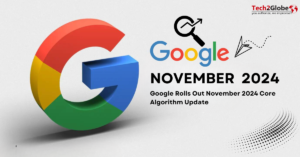Summary: Are all Google cached results gone? Yes, cache links have existed since Google’s beginning but have now been formally erased. Google recently made a huge change to its search results by removing the Cache feature, which has long been useful for users and SEO professionals. In this blog, learn why Google decided to remove cached results and the repercussions of this decision.
Key Facts
- The cache feature was removed on September 24, 2024.
- The last major update to this feature occurred on September 11, 2024, when Google added links to the Internet Archive.
- The affected groups include the general public, SEO professionals, and researchers.
- Google stated that the removal was due to the improved reliability of web page loading.
Back in January 2024, Google stirred things up by removing the cache link from search results, marking the start of the end for the cache feature we all used to rely on. At present, the cache operator has officially been put to rest, just nine months after that initial change.
Danny Sullivan, Google’s Search Liaison, acknowledged the sentimental value of the cache feature but noted that with the way the web has evolved, it was time to say goodbye. Now, users will have to turn to other tools, like the URL Inspection tool in Google Search Console, to see how Google views their pages.
What is Google’s Cache Feature?
Google’s Cache feature provides a backup of a webpage, capturing its raw HTML content as it appeared during one of Google’s crawls. These backed-up pages make up the entirety of Google Cache.
You may have used Google Cache to see older versions of websites that are no longer available or aren’t loading properly. However, it can also help you solve issues with your website.
Why Does Google Remove the Cache?
According to Google, the internet has significantly improved over time, and most pages now load consistently and swiftly. That’s why they concluded this functionality was superfluous.
They may provide an alternative by including a link to the Wayback Machine, a technology that allows you to see websites at various times. Search results now include this functionality.
Moreover, you may see previous versions of websites using the Wayback Machine service. Seeing a page’s progress over time is a helpful feature. Recently, Google replaced the outdated cache function in its search results with links to the Wayback Machine.
How Does This Impact Users?
Users can no longer use Google’s “cached” feature to:
Access unavailable pages: They can’t click the “Cached” link on the Google search results page to see a saved version of a page.
Get around article paywalls: Before, users could read some paywalled articles for free by using cached pages, but that option is now gone.
How Does This Impact SEO Professionals?
Removing this feature could impact SEO professionals who tracked changes over time, raising concerns about Google’s focus on real-time content. The challenges SEO professionals may face:
- Verifying proper indexing: They may struggle to confirm if Google has indexed their page correctly.
- Tracking indexing dates: Without the cached version’s timestamp, they can’t see when Google last indexed their page.
- Conducting competitor analysis: They may find it harder to compare a competitor’s live page with its cached version, especially if that competitor has recently improved their rankings.
- Detecting misleading cloaking practices: If a website owner shows search engines one version of a page while presenting users with a different one, Google’s cached version could help reveal this trick by showing what the search engine saw during indexing.
To bridge the void created by the deletion of the cache, Google has moved to offer substitute options:
- Google stated on September 11, 2024, that its “About this result” box now includes links to earlier versions of webpages from the Internet Archive’s Wayback Machine.
- With this change, users can quickly access older versions of websites, which will be very helpful for research.
Changes to Google Cache Feature
- First, the “cache:” search operator is no longer functional in Google Search. Therefore, users can no longer retrieve cached versions of web pages using this command.
- URLs from “webcache.googleusercontent.com”, which were once used to access cached pages directly, now redirect users to search results.
- Moreover, Google has updated its documentation to eliminate all references to the cache feature.
Alternatives to Google Cached Pages
You have other options besides Google’s “cached” function to access older versions of pages. Here are a few alternatives.
- URL Inspection Tool
The URL Inspection Tool is a search console from Google (GSC) tool that provides information about your site’s Google-indexed pages. This information contains:
- The time and date that Google last crawled the page
- If the page might be indexed by Google
- The page as seen by Google during its indexing
- Offers more precise information about how Google indexed a page than Google’s cached pages.
- Rich Results Test Tool
Google’s Rich Results Test tool allows you to live-test a page for rich results, which are special content that makes it stand out on the SERP. URL Inspection tool and Rich Results test tool are somewhat similar. However, below are the features that set Rich Results Test Tool apart:
- Crawls live URLs of pages in real-time.
- You have the option to verify any webpage URL through the Rich Results Test tool.
- Other Search Engines’ Caches
Search engines such as Bing and Yahoo! continue to offer the ability to access cached versions of websites. Users can see these caches by searching for the page on these platforms and choosing the cached version from the search results.
- Wayback Machine
Wayback Machine is an online archive of pages that appeared on various dates, and the Internet Archive owns it. Users may view how pages appeared at different times by using it as a historical record of the internet. And monitor any modifications to them over time.
Search engine caches, whether maintained by Google or not, only provide access to a single historical version of a page, which is its appearance at the time of the previous cache update.
Conclusion
Lastly, Google is always up to something new. It is sad to say goodbye to Google’s cache feature, which has been one of the oldest tools in its arsenal. However, with different alternatives available for its various functions—be it the URL Inspection Tool or the Rich Results Test Tool for checking website performance, or the Wayback Machine to access archived pages if you are having trouble loading sites—we have options to explore.
If you want to stay updated with similar news and information, follow us, as we will keep you informed about the latest trends and updates in the digital landscape.

Sahil Verma is a strong pillar of Tech2Globe’s success. As Vice President of Sales, he has played a pivotal role in the company’s growth for over the years. His expertise spans across web, mobile, and software development consulting. With his experience of 15+ years he leverages cutting-edge technology to help businesses build revenue-generating applications. Known for his client-centric approach, Sahil has a knack for understanding each business’s unique needs and offering them prompt solutions. This allows him to recommend technology solutions that enhance their intelligence, efficiency, and ultimately, profitability.










